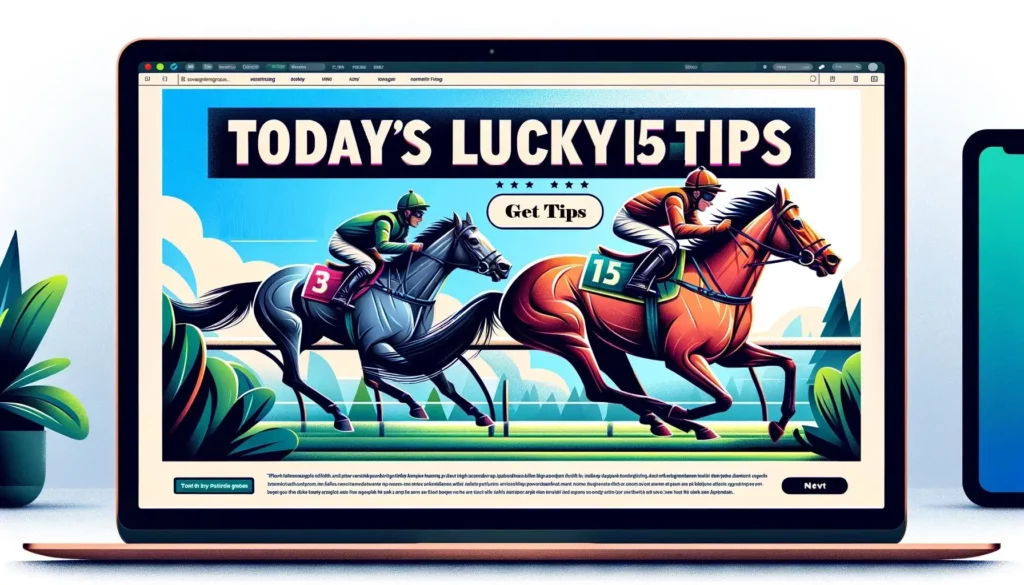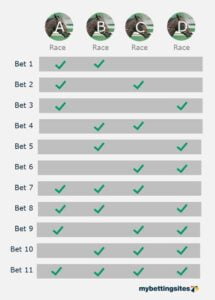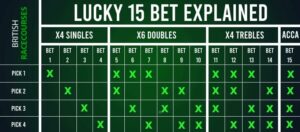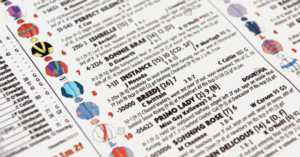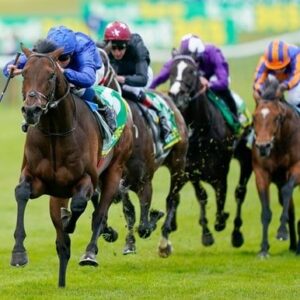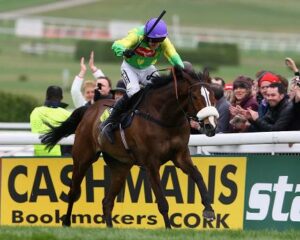How Much Does It Cost To Breed A Racehorse?
Many people dream of breeding their own horses, but how much does it cost to breed a racehorse?
Breeders themselves dream about bargain mares that produce champions, or finding a family that achieve six-figure sales prices.
Take Irishman John Hayes for example. He bought his first mare in 2007 for EUR25,000.
Her offspring were so successful that Hayes, a Tipperary-based structural engineer, could eventually afford Frankel to cover the mare and sell the foal for EUR650,000.
However, the majority of people can’t even dream of owning a racehorse.
The ongoing costs of keeping an average horse that is not jet-setting overseas reaching upwards of £25,000 per year.
This is why syndicates are becoming increasingly important to the sport.
And as you’ll read later in this piece, broodmares owned by syndicates interested in breeding rather than just racing and beginning to become far more commonplace.
In the UK particularly, breeders accept that there is no way to get their costs back from the prize money if they breed to race. However, an optimist breeder may be able to sell their stock and make a profit.
The vast amounts of money spent at bloodstock auctions must end up in someone’s pocket, right? . .
Who Breeds Racehorses?
Commercial breeders and owner-breeders main aim is to raise horses that are physically ‘correct’ as racing machines and sound enough to withstand many years of training and racing.
The commercial operators also have the goal of making a profit.
Any mare’s value and that of her future offspring will increase if she or her close relatives produce successful racehorses.
If your mare should breed a winning Group-class horse relatively early in her breeding career and you succeed in getting several more siblings on the ground, the profits can be astronomical
Dream outcomes aside, it’s obvious that breeding racehorses is a very costly pursuit and well beyond most people’s means.
Breeding Racehorses: The Facts
So, how much does it cost to breed a racehorse? Really?
Although it is possible to assume that the statistics and obstacles are real, they can also be frustrating and discouraging.
The most recent conclusive report on such matters is the Thoroughbred Breeders Association’s 2018 Economic Impact Study.
The survey revealed that 66% of the breeders are not profitable.
Another 32% explained that they were interested in racing rather than selling. These parties make up a large percentage of breeders who consistently lose money.
So, what are the typical costs of getting into breeding?
We’ve thought about the likely cost and outcome for a new breeder looking to sell a Flat bred foal at the yearling sales.
This market is the most lucrative and competitive in the industry. And where fairytales can be born.
Breeding A Thoroughbred Mare: An Example
Imagine that we had bought a mare during the winter breeding stock sale.
This mare might be unraced but from a nice family and has maybe already carried offspring that went on to success at the track or sales.
Or it may be that while her pedigree was not exceptional, her own form figures on the racecourse means she is likely to breed commerciallly viable horses.
We’ll focus on breeding a single hypothetical yearling for the sales for the purpose of this example.
The cost of boarding in Britain or Ireland varies widely. The average cost is between £20-25 per day. We will therefore assume that a weekly cost of £140 is reasonable.
If she is not involved in major accidents, our mare will still incur additional annual bills of around £800 a year.
These normal running costs will include dentistry, farriery and standard inoculations.
We decide to breed her this year and we choose one of the more commercial stallions who may be able to produce sales interest.
The stud fee for the right stallion could add another £8,000.
Our Mare Gives Birth To A Healthy Foal
We then have to pay for the delivery of our newborn and registration fees. This adds an additional £5 per day for the first six months.
Once the foal is weaned, it’s keep will become a separate expenditure costing around £15 per day.
The mare and her foal live together at the stud until mid-summer of it’s 2nd year with these same overheads.
However, in anticipation of a sale in the autumn, the yearling must begin sales preparation.
This will be a bit more expensive at £35 per day for eight weeks.
It will also cost around £1,000 to enter the sale and board at the auction premises.
The upfront costs just for this yearling are now close to £16,000.
In total, we could have spent £43,000 over three years to breed this horse and get it to the sales ring.
Let’s get back to the broodmare. Her value will depreciate gradually each, as another breeding year passes and the horse edges closer to retirement or death.
A median-priced mare with a pedigree good enough to produce commercially attractive offspring costs around £25,000.
Overall we’ve invested around £80,000 in cash to get started at a low but acceptable level.
Anyone who breeds racehorses can only hope to recover the investment through selling further offspring of the mare.
The Potential Return
The yearling sales are the World Cup Finals of the bloodstock world and, for the breeder, tension reaches its peak at this time of year.
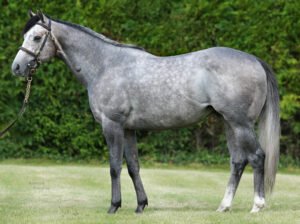
Are people happy with the yearling’s appearance? How is the stallion being received? Are his other offspring selling well?
As median sales results are more informative than averages, which can be skewed due to high prices at the top.
The best possible result from all available sires (at time of writing) would be if we’d chosen Havana Grey, a young stallion whose first crops have been flying.
As a result, one of Havana Grey’s yearlings sold for a princely £230,000.
His median sale price in 2022 so far is around £43,000 so let’s assume that’s what we sold for.
However, we also have to deduct five percent for the auctioneer. This leaves us with a cheque for just under £40,000 and carrying over a loss of around £3,000.
But, remember that Havana Grey would have been the best choice possible within our budget.
There are sires with similar profiles in the same range that are less popular. Many had median sales prices that were below even their stud fee!
Choosing the most successful first-crop sire in the price bracket would have been very fortunate.
But It Doesn’t Always Work Out This Way
However, though there is a chance that we sold the yearling at a higher price than the median, it’s also possible that we didn’t sell it and were left with £41,000 in total costs.
And after all that, we had to take the yearling home.
We almost certainly went back to the roulette table for another spin and covered the mare again. We might also be able to pay the initial cost of the mare with another smart choice, such as an Ardad or Havana Grey. If we pick wrong, the current hole is just getting deeper.
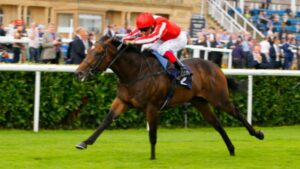
Horses are not machines. Although you might be able to get eight foals out of a mare, it is possible that she will need to rest for a year or return to the stallion. Or may simply prove unable to conceive and deliver a healthy foal. Accidents are waiting to happen around every corner.
One breeder says, “It is increasingly expensive just to take a yearling to the sales and there’s a real chance you might not even sell it once you get there.”
“It’s difficult to make a profit at a bottom end, unless there’s a dramatic update to the mare, or she’s foal to a stallion whose previous crops are flying and now everyone wants the offspring.”
The Rise Of Breeding Syndicates
There are many other ways to get into breeding rather than the example above. For example, you could take on a mare that has been covered already sell this offspring to lower overheads.
Natalie Folland, who board mares at Fonthill Stud, Wiltshire, with Matt Bowen, confirms she is frequently contacted by newcomers to the idea of breeding.
However, she stresses that she is always open with potential clients about not breeding from mares with poor profiles and asks them their goals from the beginning.
She says, “There is an element of trying to reduce risk and only try to help people produce decent racehorses.”
“Syndicates are expanding, which is a positive thing in terms of encouraging people to get involved.”
“I’ve had many conversations about it recently and have considered launching a syndicate of our own. Simply because so many people seem interested.”
“It’s a great way to get into breeding, it has less risk and you have an experienced syndicate manager overseeing the entire process.”
One vital ingredient for success is a healthy dose of realism and perspective.
She says, “When things are good, breeding is a wonderful experience. But it can also be expensive and heartbreaking if things go wrong, as they sometimes do. It’s important to maintain realistic expectations at all times.”
The Decline of Foal Crop Production in Horse Racing
Horse racing is a beloved sport that has been enjoyed for centuries. However, there are growing concerns about the industry regarding a falling trend in foal crop production in Britain and Ireland.
This decline can have a significant impact on the future of horse racing, as a decrease in foal crop production means a decrease in the number of horses available for racing.
Why is Foal Crop Production Falling?
There are several reasons for the decline in foal crop production in horse racing. One of the biggest factors is the cost of breeding racehorses.
Breeding racehorses is an expensive and lengthy commitment that does not come without risk.
Many breeders are hesitant to invest in this expensive process, especially if they are not guaranteed a return on their investment.
Another major factor is the uncertainty of the horse racing industry.
With the rise of other sports and entertainment options, the horse racing industry is facing increased competition for audiences and revenue.
This has made it more difficult for breeders to make a profit, which has led to a decrease in the number of horses being bred.
The Impact on Horse Racing
The decline in foal crop production in horse racing has the potential to have a significant impact on the future of the sport.
A decrease in the number of horses available for racing means a decrease in the number of races that can be run, which could lead to a decline in revenues for the industry.
This could also lead to a decline in the number of jobs and livelihoods that depend on horse racing.
The Need for Action in the Bloodstock Industry
It is important for the horse racing industry to address this issue as soon as possible. Unfortunately, it seems horse racing authorities might not address this issue until after it begins directly impacting overall revenues.
By taking action now, horse racing authorities can ensure the long-term sustainability of the industry
However, if the fairytale does come about then it’s clear huge rewards await.
Just ask John Hayes.


